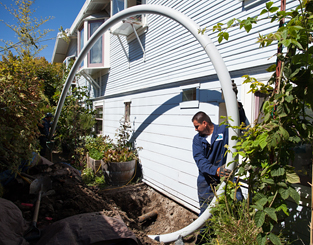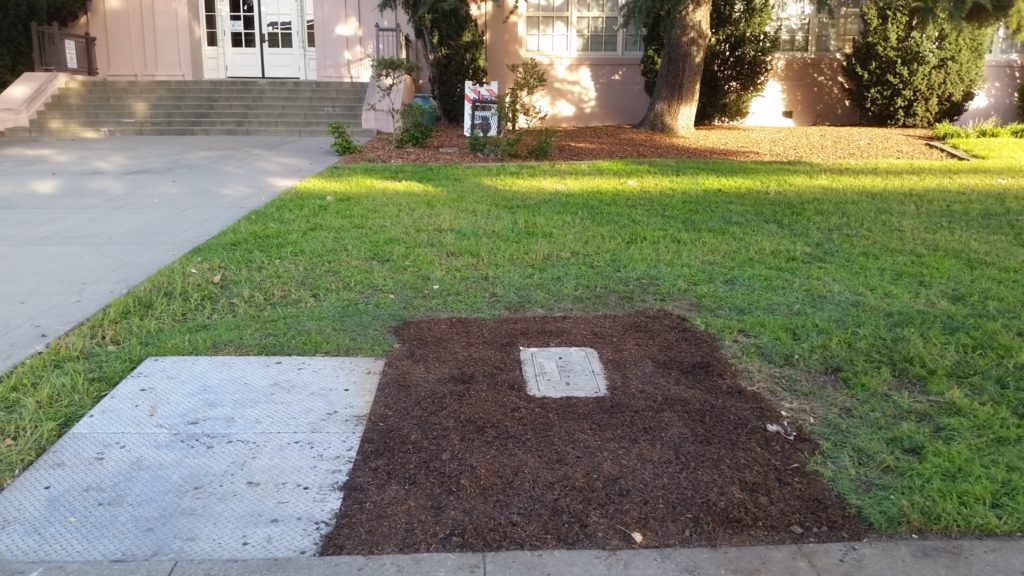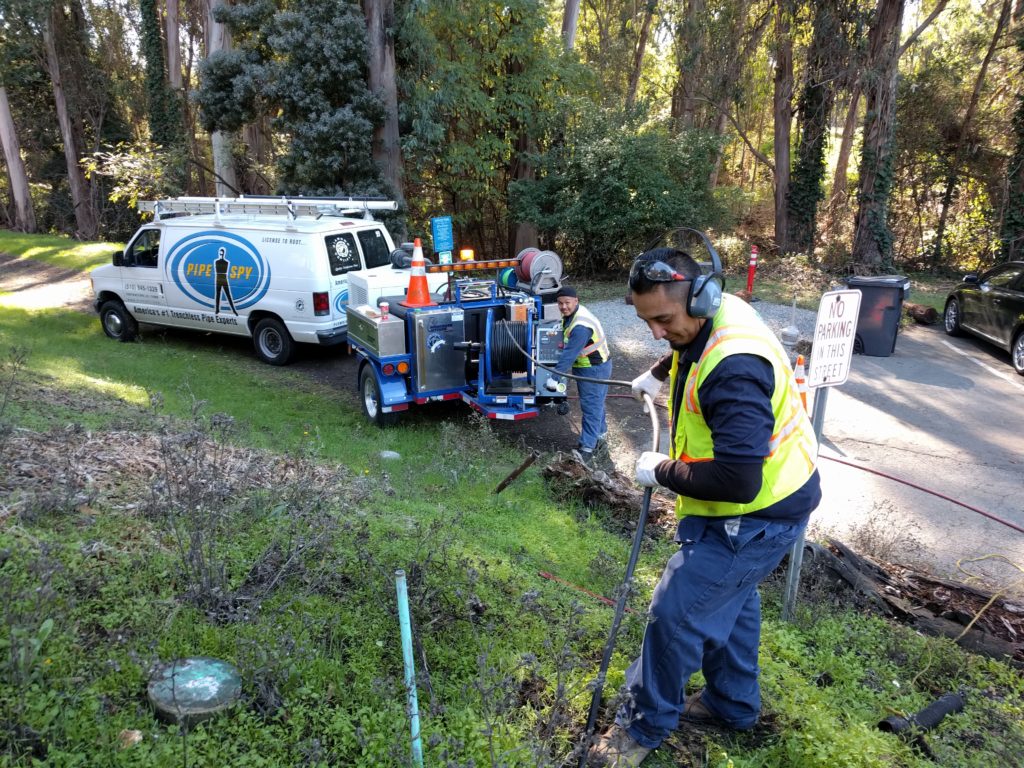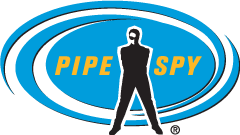Although our industry is NOT known for its contributions to the environment, we have a unique opportunity to affect the sustainability of our communities through eco-friendly plumbing and sewage business practices. Pipe Spy and other sewage contractors work at the intersection of buildings (which account for about 40% of U.S. energy consumption) and water (a limited resource). This means that our work, if done purposefully, can help reduce energy use, save fresh water, reduce carbon emissions, and more.

The Importance of Eco-Friendly Plumbing
Sustainability is a growing concern, and for good reason. In addition to human activities leading to excessive carbon emissions and climate change, we are using up resources like energy, water, and other natural resources at an alarming rate.
How much have you thought about groundwater this week? This week being National Groundwater Awareness Week, we hope quite a bit. Water, for instance, is the most crucial component of life, but less than 1% of our planet’s water is available for use by people. This creates a delicate balance that we must actively work to maintain, but as Americans, we use more than our fair share. Fresh water is an especially high priority in the San Francisco Bay Area, where pollution of the Bay has been an issue for decades. Access to fresh water is a hot topic in greater California, too, and not just for environmental reasons: Californians use a whopping 20% of household energy just to manage water.
Being Eco-Friendly in the Sewer Industry
Unfortunately, there are many sewage companies who are willing to cut corners that put our environment at risk just to save a few bucks. At Pipe Spy, we believe it’s our responsibility to maintain sustainable, eco-friendly plumbing practices, which is why we are proud to be Green Certified by the California Green Business Program. This certification is a testament to our practical efforts to build a healthier community and a thriving environment. We take pride in doing work responsibly, sustainably, and efficiently. It’s best for us, for our customers, for the community, and for the world.
5 Action Steps for Eco-Friendly Plumbing Companies
Here’s what we believe are the best practices for eco-friendly plumbing practices at a sewer pipe repair company.
1. Practice what you preach.
At Pipe Spy, we put our sustainability values into practice before we even get to a client’s home by outfitting our headquarters with efficient systems. These include powering the office with solar energy (which we regularly monitor and upgrade), replacing our light bulbs with LEDs, and installing low-flow toilets and special storm drain covers to prevent dangerous spills.
2. Avoid disrupting the environment.
Construction jobs tend to wreak havoc on microclimates, but Pipe Spy does everything possible to avoid disrupting the environment surrounding our job sites. Since we specialize in trenchless sewer installation and rehabilitation, we don’t have to tear up the entire yard in order to replace a faulty sewer lateral. The plant life (we cannot avoid impacting) is relocated instead of destroyed whenever possible, and dug-up dirt is reused at the end of a project. We also make every effort to conserve water and prevent runoff.

3. Use efficient equipment.
This is one of the best ways to reduce your carbon footprint during a sewer repair job. We use low-emissions tools and equipment to complete all plumbing and sewer repair services.
4. Reduce waste by recycling and reusing materials.
It’s amazing how quickly your waste footprint can grow in contractor work like ours. That’s why we recycle over 95% of the material waste collected from sewer line replacements and other plumbing projects. For example, most of the metal piping removed from broken sewer laterals can be reused for either smelting or conversion into other products.
Our team identifies all recyclable materials, sorts out the unsalvageable waste into designated containers, and delivers the collections either to a local recycling facility or to specialized treatment facilities.
Special techniques like “Pipe Fusing” help us salvage materials like HDPE that other contractors may thoughtlessly throw away. With this method (shown in the video below) we are able to recycle materials left over from previous jobs to make custom adjustments to pipes with awkward angles or in hard-to-reach places.
5. Define and live your sustainable values.
It’s said that you are 21% more likely to reach a goal if you write it down. The same goes for a company’s values. We were able to achieve Green Certification by setting a concrete goal, and in order to continue living those values, we have taken steps such as writing posts (like this one) and appointing a passionate group of employees to a “Green Team” that helps us all hold each other accountable.
10 Energy Efficiency Tips for Homeowners
While our company is fueled by a passion for sustainable business practices, we also recognize that many homeowners in Oakland and surrounding communities want to have a positive impact on the environment every day—not just when you’re installing or replacing a sewer lateral.
In observance of World Plumbing Day on March 11, we’ve shared the following great tips to work sustainability into your family’s daily life.

1. Repair drips and leaks.
Household leaks waste 10,000 gallons of water per year, and one leaky toilet can waste 200 gallons of water per day! Check your toilet by dropping a little food coloring in the tank. If the color appears in the bowl after a few minutes, that indicates that there’s a leak. Contact a plumbing service to fix this issue right away.
2. Install low-flow fixtures.
Upgrading to low-flow water fixtures can dramatically reduce your water consumption. High-efficiency toilets, for example, use 60-80% less water compared to pre-1992 toilets.
3. Use high-efficiency washing machines.
Energy Star machines use 35% less energy and 50% less water. In fact, they can save 14 gallons or more per load. There are also other types of Energy Star appliances available, such as dehumidifiers, ice machines and pool pumps. Many products offer rebates, too. Go to the organization’s product finder for more information.
4. Wash your clothes in the correct load size—with cold water.
When you wash small loads, avoid using a large-load cycle so the machine doesn’t use more water than it needs. If you can’t select small-load cycle, try to compile dirty clothes into large loads. You can also save energy by washing with cold water.
5. Use a water-efficient irrigation system.
In California, many homeowners and businesses need built-in irrigation in order to keep lawns and gardens healthy and thriving, but some of these systems waste 50% of their water. A system with drip irrigation, moisture sensors and a rain shut-off device can lead to dramatic improvements.
6. Deliberately arrange your garden.
By grouping plants by their water needs, considering sun or shade requirements and minimizing steep slopes, your irrigation becomes much easier to manage and more of the water you use will be absorbed by the plants.
7. Turn off the tap while brushing.
This common tip really can make a difference. Turning the water off while you brush your teeth can save up to 8 gallons of water per day (which leads to over 100 gallons per month!).
8. Take a (quick) shower instead of a bath.
A 5-minute shower actually uses less water than filling up the tub.
9. Upgrade your water heating systems.
An efficient water heater saves energy and water. Circulation pumps, for instance, minimize the time it takes for hot water to get to the faucet, cutting down on energy and water use. Insulated pipes can also prevent heat loss that would otherwise lead to higher energy use.
10. Educate your kids.
This fun online game can help kids (or adults) learn the facts about water conservation. We also recommend that parents explain the new systems you put in place so that they learn to appreciate and support your sustainable efforts.
Contact Pipe Spy for Eco-Friendly Sewage Services
Interested in hearing more about our environmentally-friendly sewage services? Learn more about Pipe Spy’s video inspection and trenchless sewer replacement services, or contact our team to discuss your project and request more information.
